
Nihonmatsu is a city in Fukushima Prefecture, Japan. As of 1 April 2020, the city has an estimated population of 54,013 in 20,179 households, and a population density of 160 persons per km2. The total area of the city was 344.42 square kilometres (132.98 sq mi). The Adachi neighborhood of Nihonmatsu was the birthplace of artist Chieko Takamura, subject of the book of poems Chieko's Sky, written by her husband Kōtarō Takamura.

Kodama is one of the three train services running on the Tōkaidō and San'yō Shinkansen lines. Stopping at every station, the Kodama is the slowest Shinkansen service for trips between major cities such as Tokyo and Osaka. The Kodama trains are used primarily for travel to and from smaller cities such as Atami. Travelers between major cities generally take the Nozomi or Hikari services, which make fewer stops, although the former is not covered under the Japan Rail Pass while the Kodama is, making these services an affordable alternative.

Hajime no Ippo is a Japanese boxing-themed manga series written and illustrated by George Morikawa. It has been serialized by Kodansha in the shōnen manga magazine Weekly Shōnen Magazine since October 1989, with its chapters collected into 141 tankōbon volumes as of July 2024. It follows the story of high school student Ippo Makunouchi, as he begins his career in boxing and over time obtains many titles and defeats various opponents.

Yoshio Kodama was a Japanese right-wing ultranationalist, Imperial Japanese Navy rear admiral and a prominent figure in the rise of organized crime in Japan. The most famous kuromaku, or behind-the-scenes power broker, of the 20th century, he was active in Japan's political arena and criminal underworld from the 1930s to the 1970s, and became enormously wealthy through his involvement in smuggling operations.

Viscount Kodama Gentarō was a Japanese general in the Imperial Japanese Army and a government minister during the Meiji period. He was instrumental in establishing the modern Imperial Japanese military.
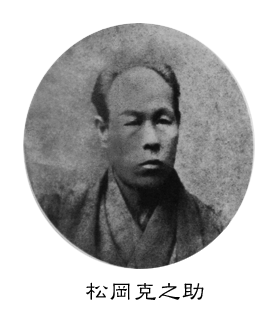
Shindō Yōshin-ryū (新道楊心流), meaning "New Willow School" is a traditional school (ko-ryū) of Japanese martial arts, teaching primarily the art of jūjutsu. The first kanji of the name originally translated into "新=New", but in the mainline branch the kanji for "new" was eventually changed into the homophonic "神=sacred". The name of the school may also be transliterated as Shintō Yōshin-ryū, but the koryu tradition should not be confused with the modern school of Shintōyōshin-ryū which is unconnected.
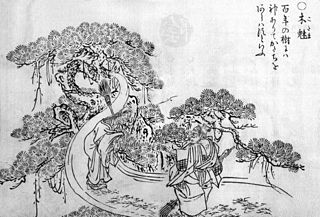
Kodama are spirits in Japanese folklore that inhabit trees. The term is also used to denote a tree in which a kodama supposedly resides. The phenomenon known as yamabiko, when sounds make a delayed echoing effect in mountains and valleys, is sometimes attributed to this kind of spirit and may also be referred to as "kodama".

Takamura Kōun was a Japanese sculptor who exerted himself for the modernization of wood carving and a professor of Tokyo School of Fine Arts, who dedicated himself to the education of the future generations.

Kōtarō Takamura was a Japanese poet and sculptor.
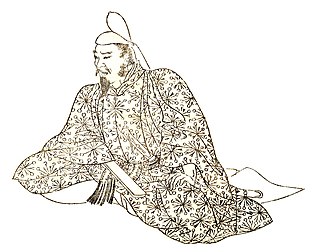
Ono no Takamura, also known as Sangi no Takamura (参議篁), was a Japanese calligrapher and poet of the early Heian period.
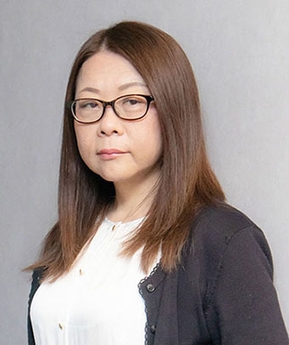
Rieko Kodama, also known as Phoenix Rie, was a Japanese video game artist, director, and producer employed by Sega from 1984 until her death. She is primarily known for her work on role-playing video games including the original Phantasy Star series, the 7th Dragon series, and Skies of Arcadia (2000). She is often recognized as one of the first successful women in the video game industry.
Portrait of Chieko is a 1967 Japanese drama film directed by Noboru Nakamura. It is based both on the 1941 poetry collection Chieko-shō by Japanese poet and sculptor Kōtarō Takamura, dedicated to his wife Chieko (1886–1938), and on the 1957 novel Shōsetsu Chieko-shō by Haruo Satō. The film was nominated for the Academy Award for Best International Feature Film.
The Takamura Monogatari, also called the Takamura Nikki or the Ono no Takamura shū, is a Japanese uta monogatari that was written any time between the mid-Heian period to the early-Kamakura period. It is in one volume and consists of two distinct sections. The first section describes a young Ono no Takamura's tragic love affair with his half-sister. The second section is taken to be by a different author, and is dated somewhat later than the first. Both authors are unknown, and the poems attributed in the tale to Takamura are treated as dubious at best.

Kenji Kodama is a Japanese anime director, and storyboard artist. He is best known for being one of the main directors on the long-running anime Case Closed, as well as the City Hunter series and Lupin III Part III. Kodama is also a member of the Japanese Animation Creators Association.

The San'yō Shinkansen (山陽新幹線) is a line of the Japanese Shinkansen high-speed rail network, connecting Shin-Osaka in Osaka with Hakata Station in Fukuoka, the two largest cities in western Japan. Operated by the West Japan Railway Company, it is a westward continuation of the Tōkaidō Shinkansen and also serves other major cities in between on Honshu and Kyushu islands such as Kobe, Himeji, Okayama, Hiroshima, and Kitakyushu. The Kyushu Shinkansen continues south of Hakata to Kagoshima. The San'yō Shinkansen connects Hakata with Osaka in two and a half hours, with trains operating at a maximum operating speed of 300 km/h (186 mph) for most of the journey Some Nozomi trains operate continuously on San'yō and Tōkaidō Shinkansen lines, connecting Tokyo and Hakata in five hours.
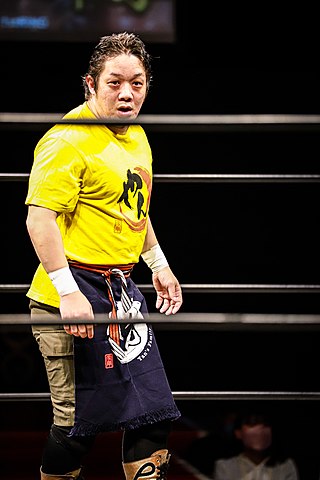
Yusuke Kodama is a Japanese professional wrestler and currently wrestlers for All Japan Pro Wrestling as a freelancer. Kodama is best known for his time with Wrestle-1 (W-1), where he is a former two time UWA World Trios Champion, two time Wrestle-1 Cruiser Division Champion and one time Wrestle-1 Tag Team Champion with Shotaro Ashino.
Events in the year 1938 in Japan. It corresponds to Shōwa 13 (昭和13年) in the Japanese calendar.
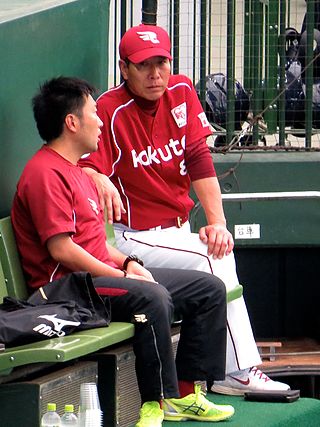
Hiroshi Takamura is a Japanese former Nippon Professional Baseball pitcher, pitching coach.
Yuki Kodama is a Japanese manga artist. She is best known as the creator of the manga series Kids on the Slope, for which she won a Shogakukan Manga Award in 2011.














